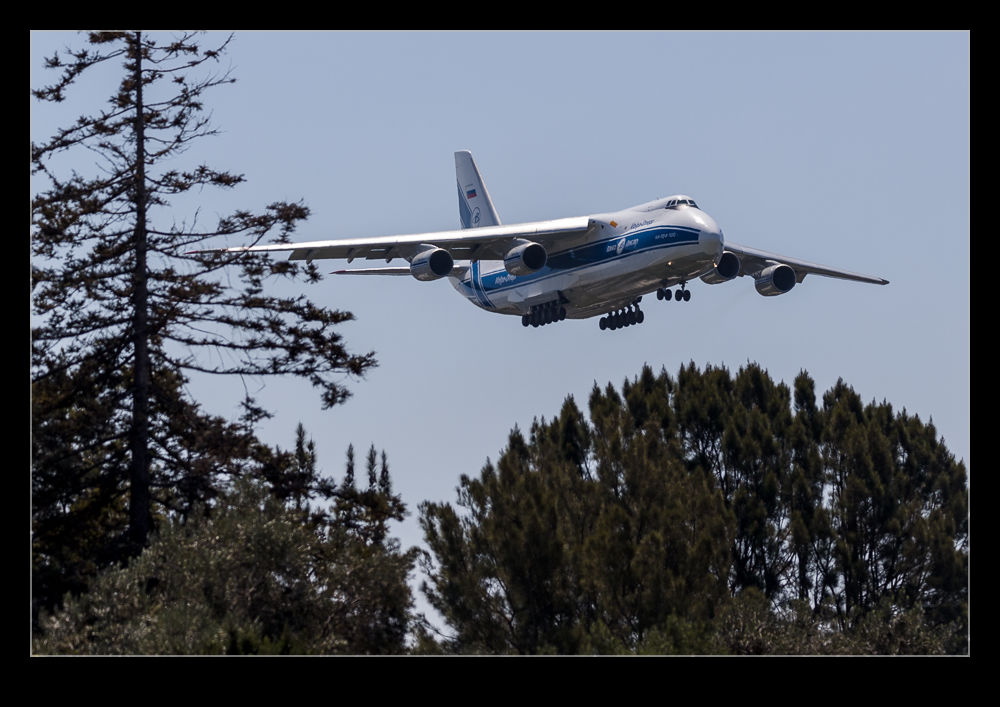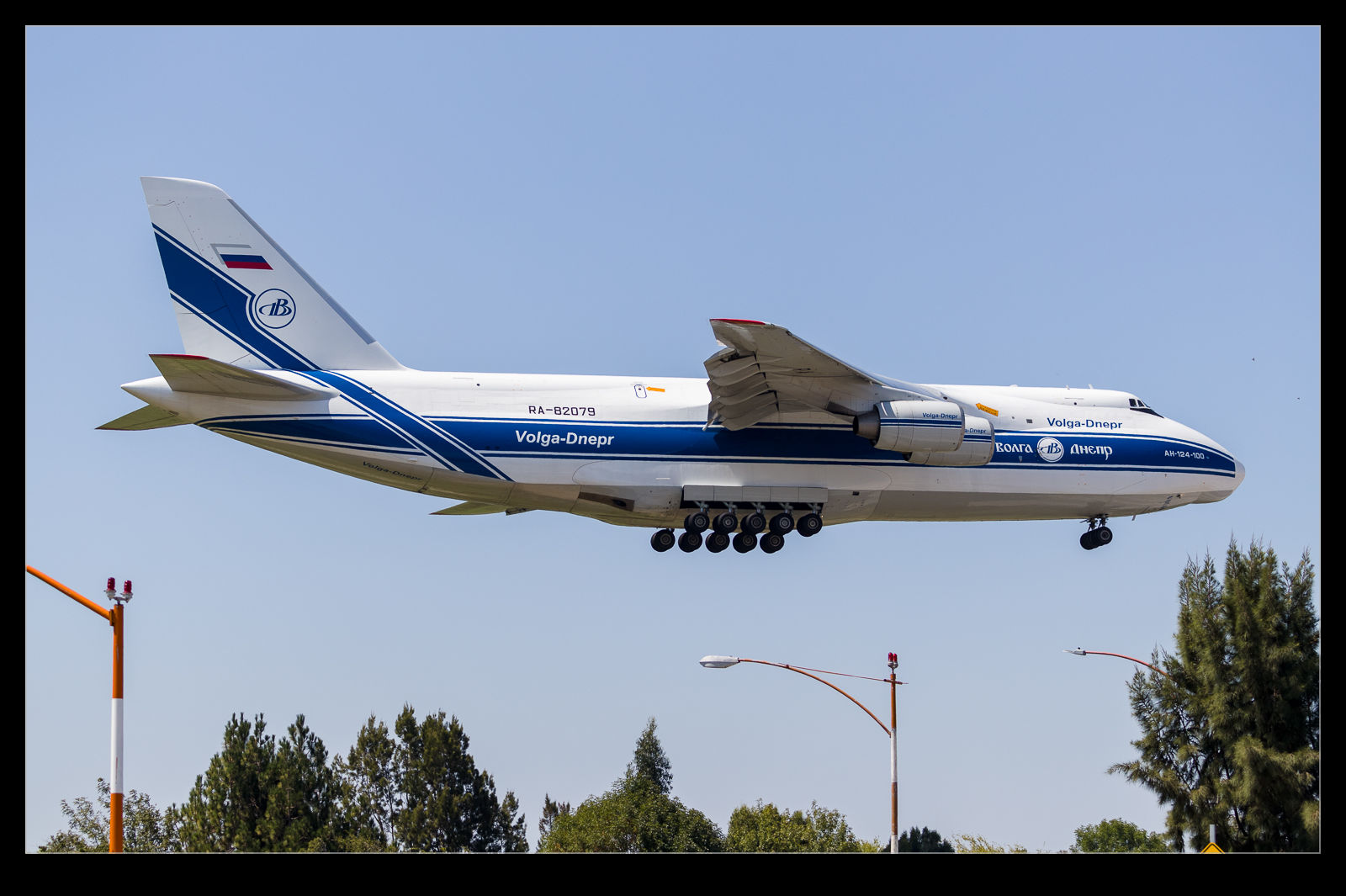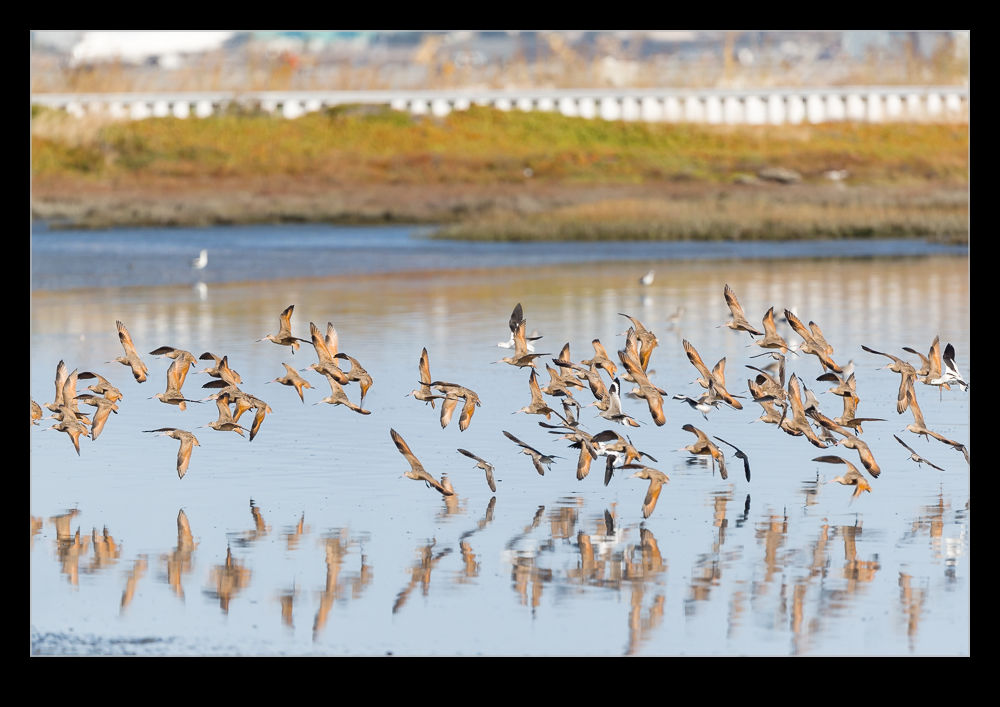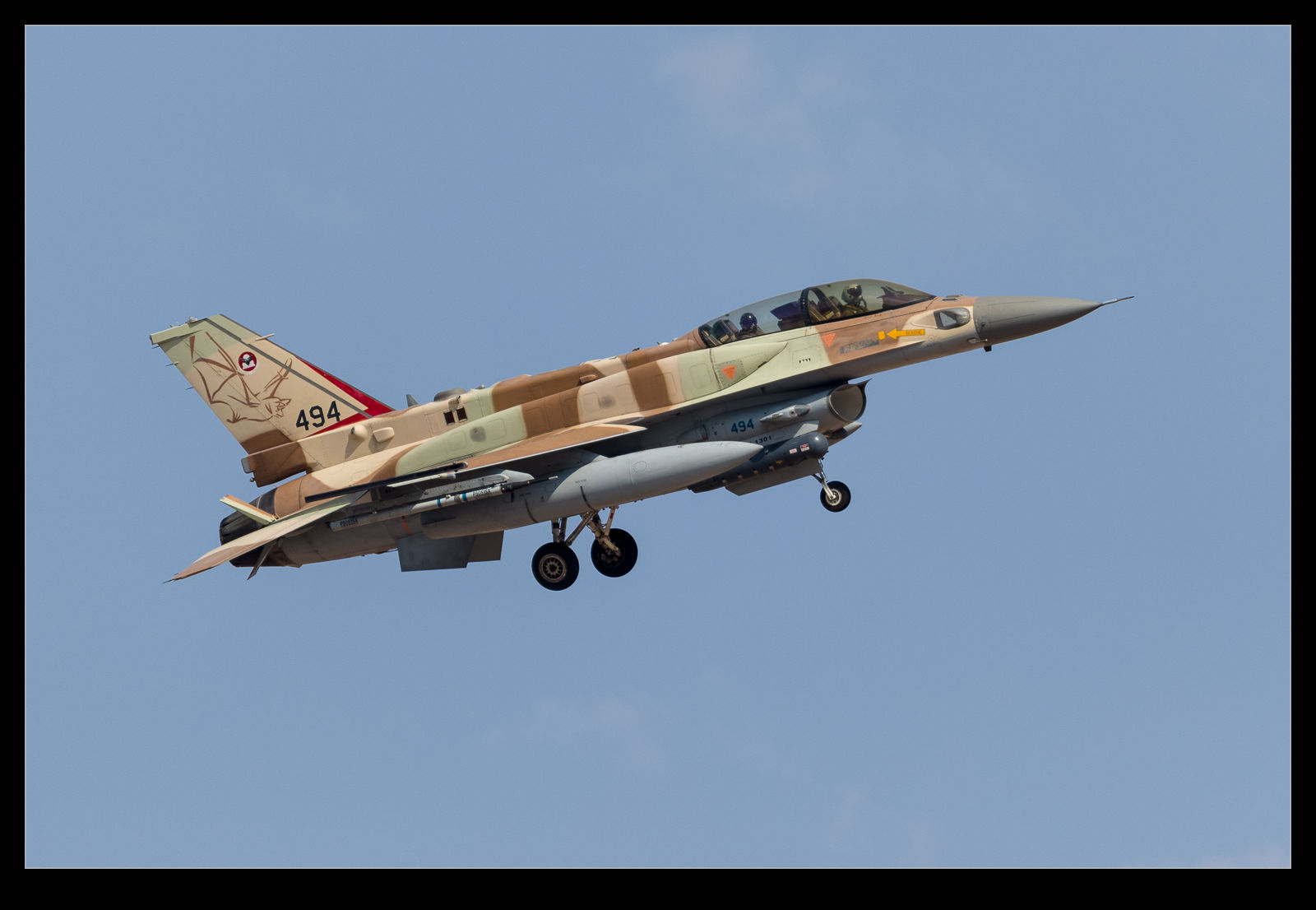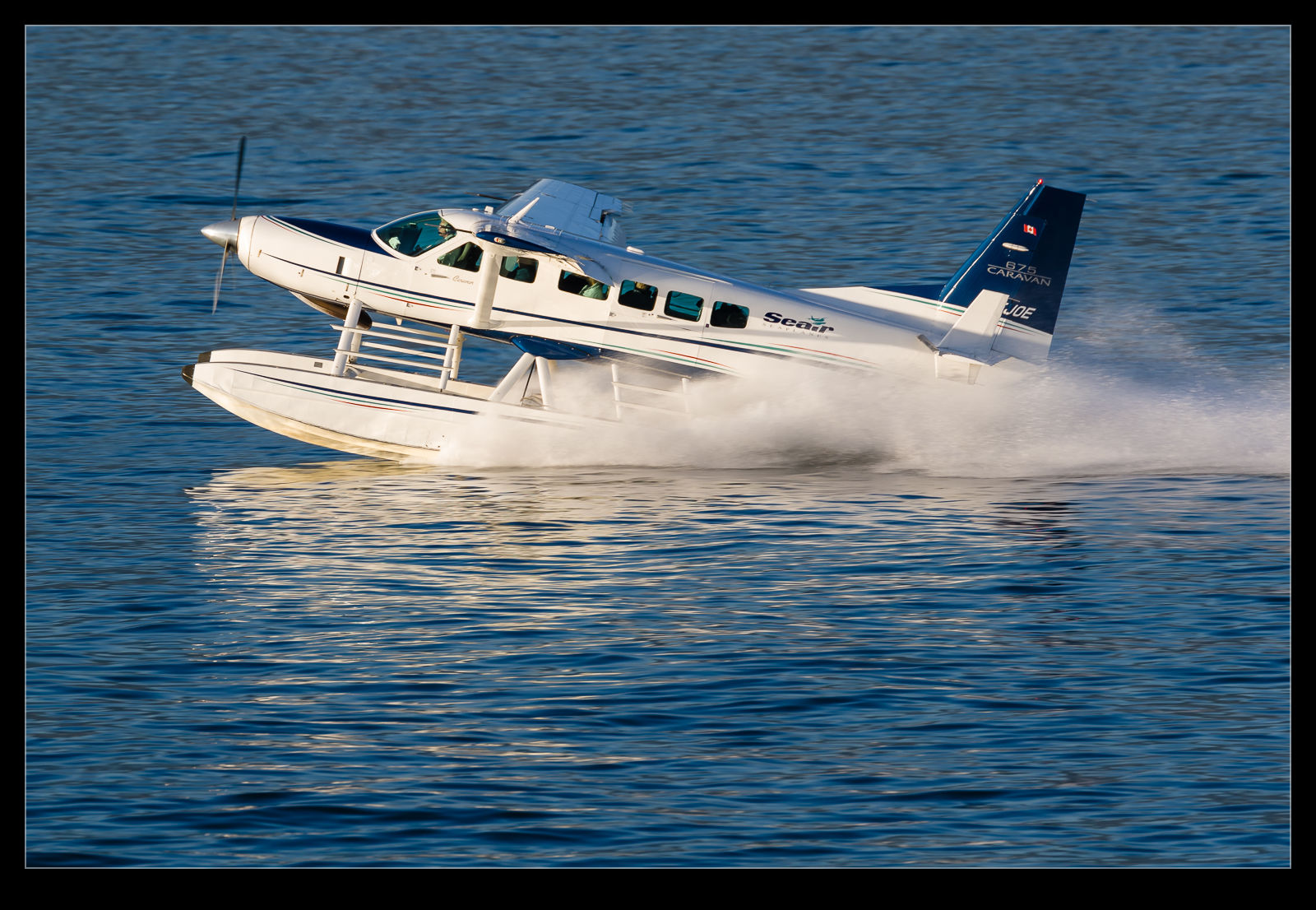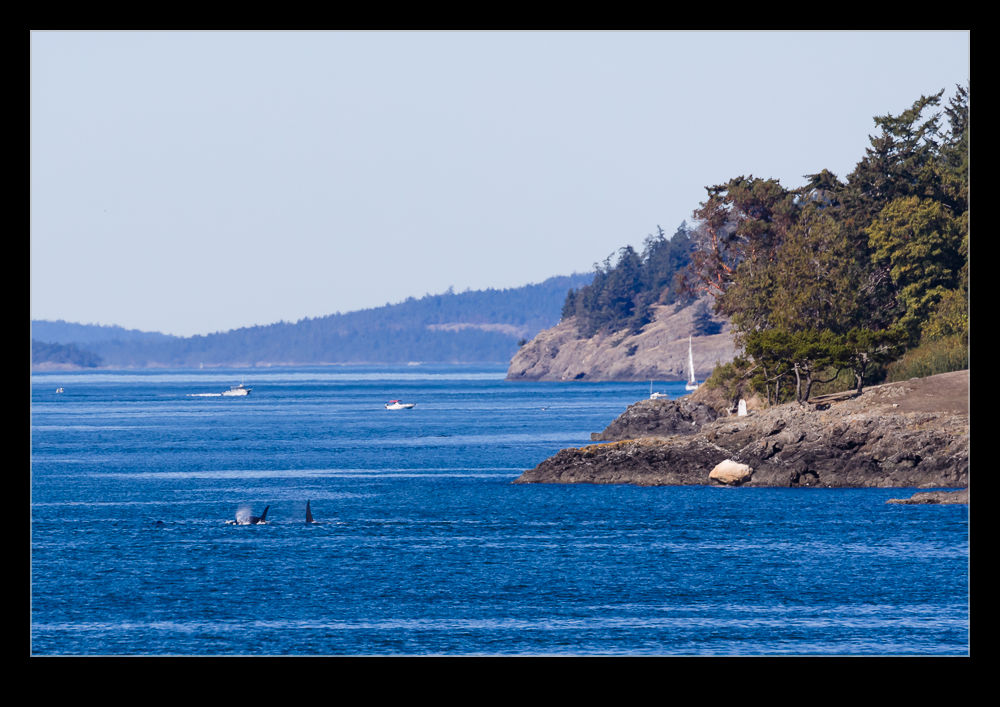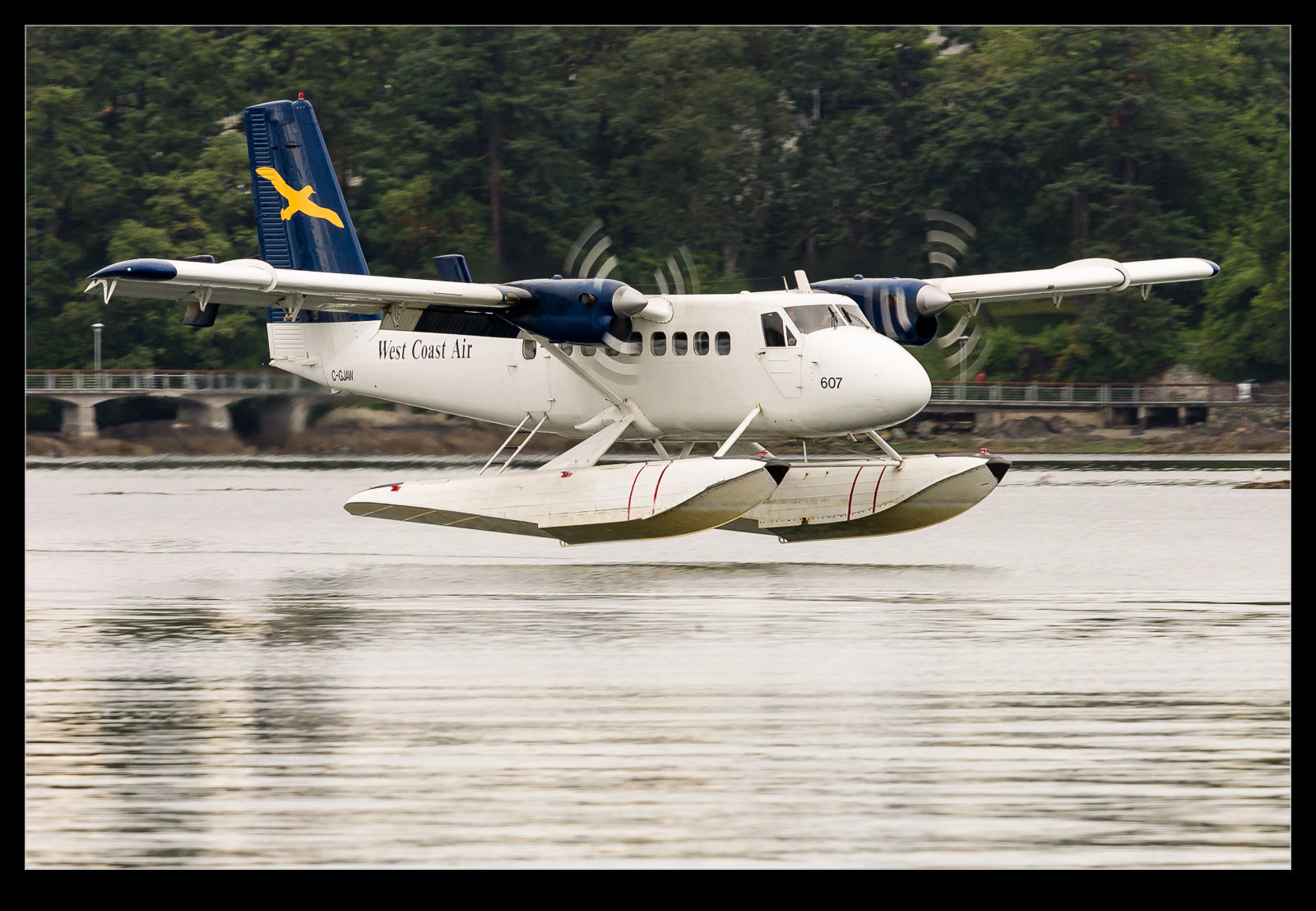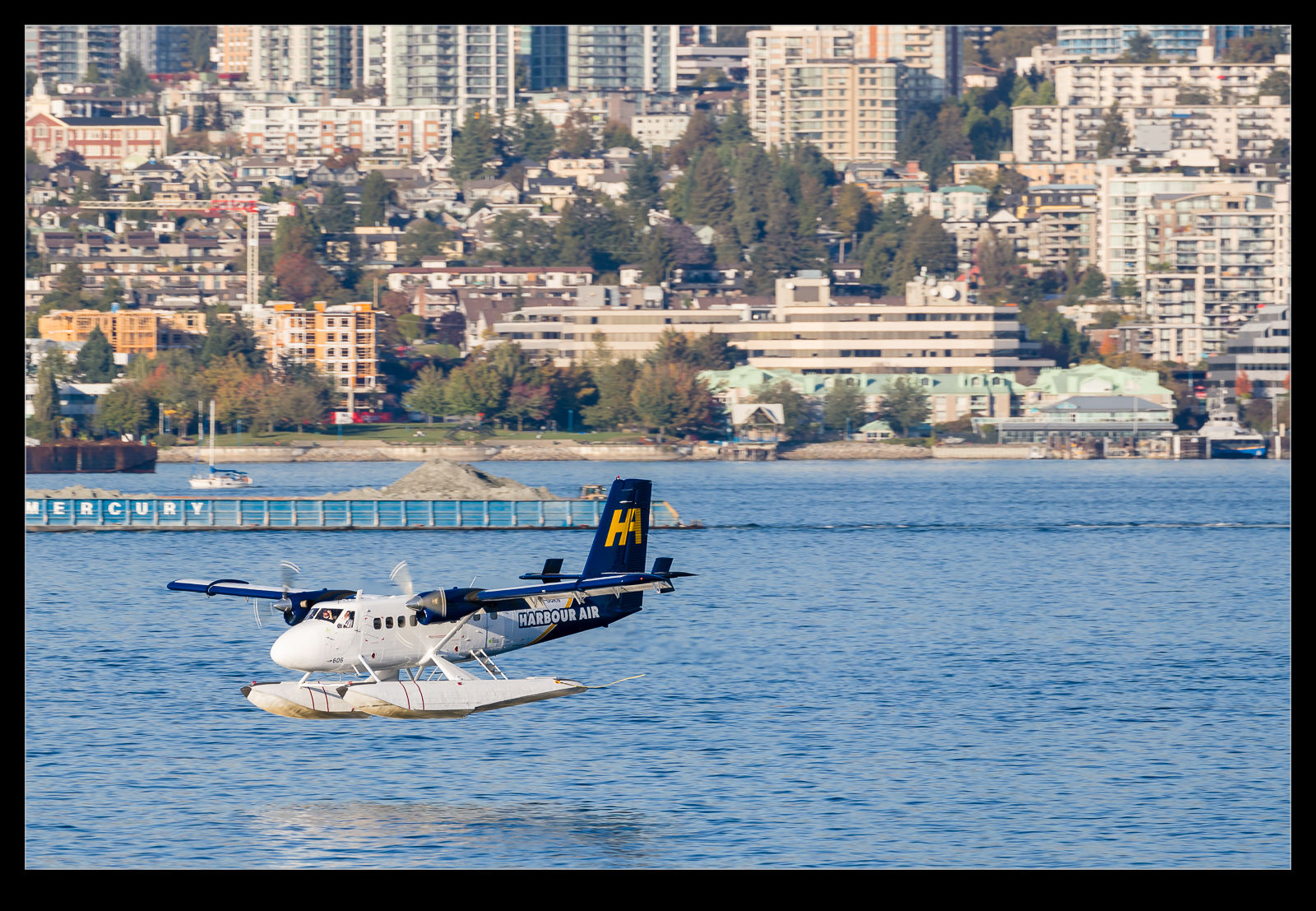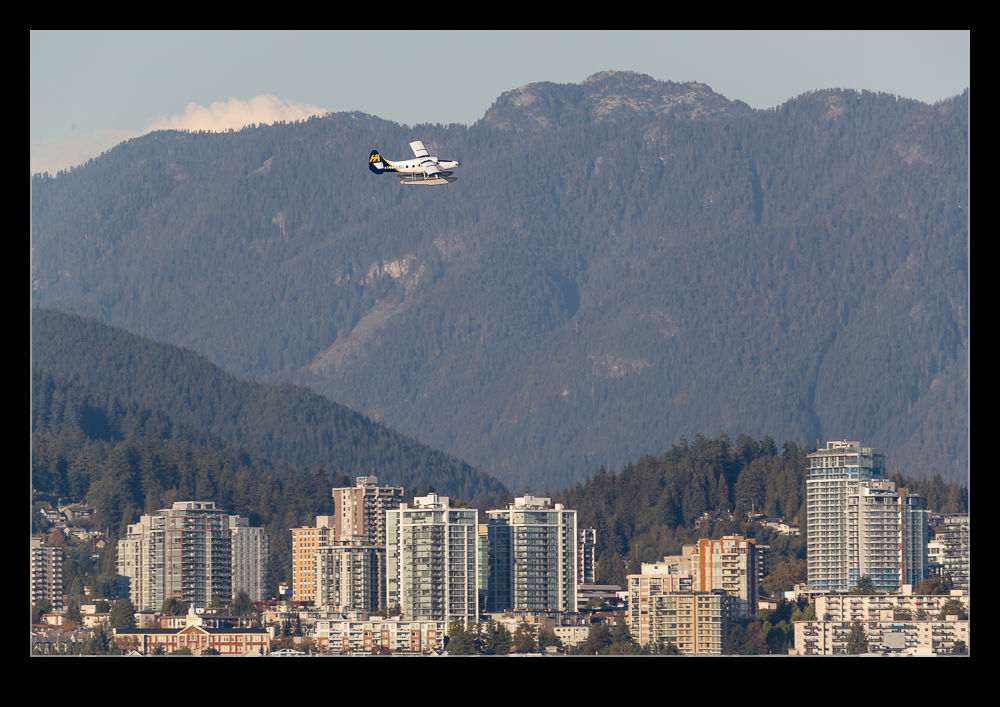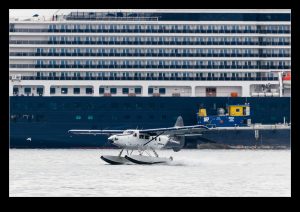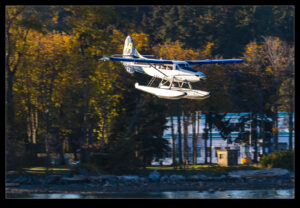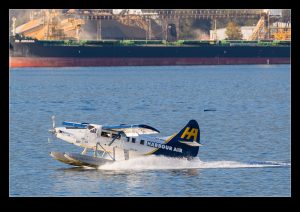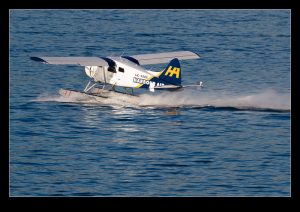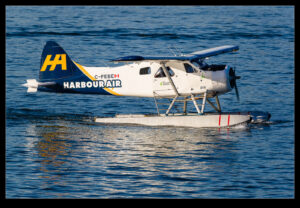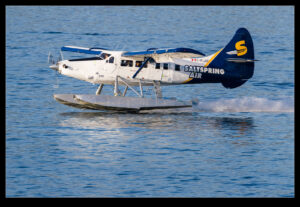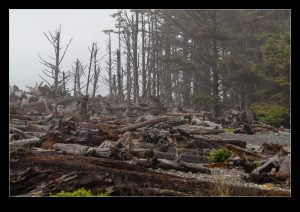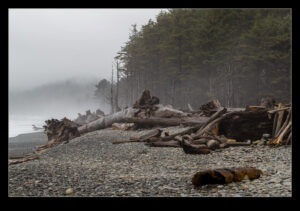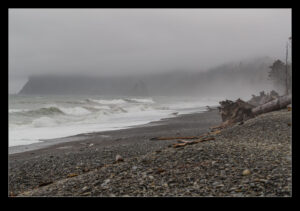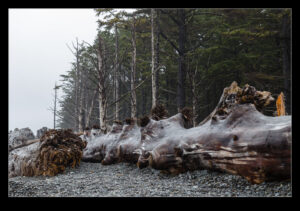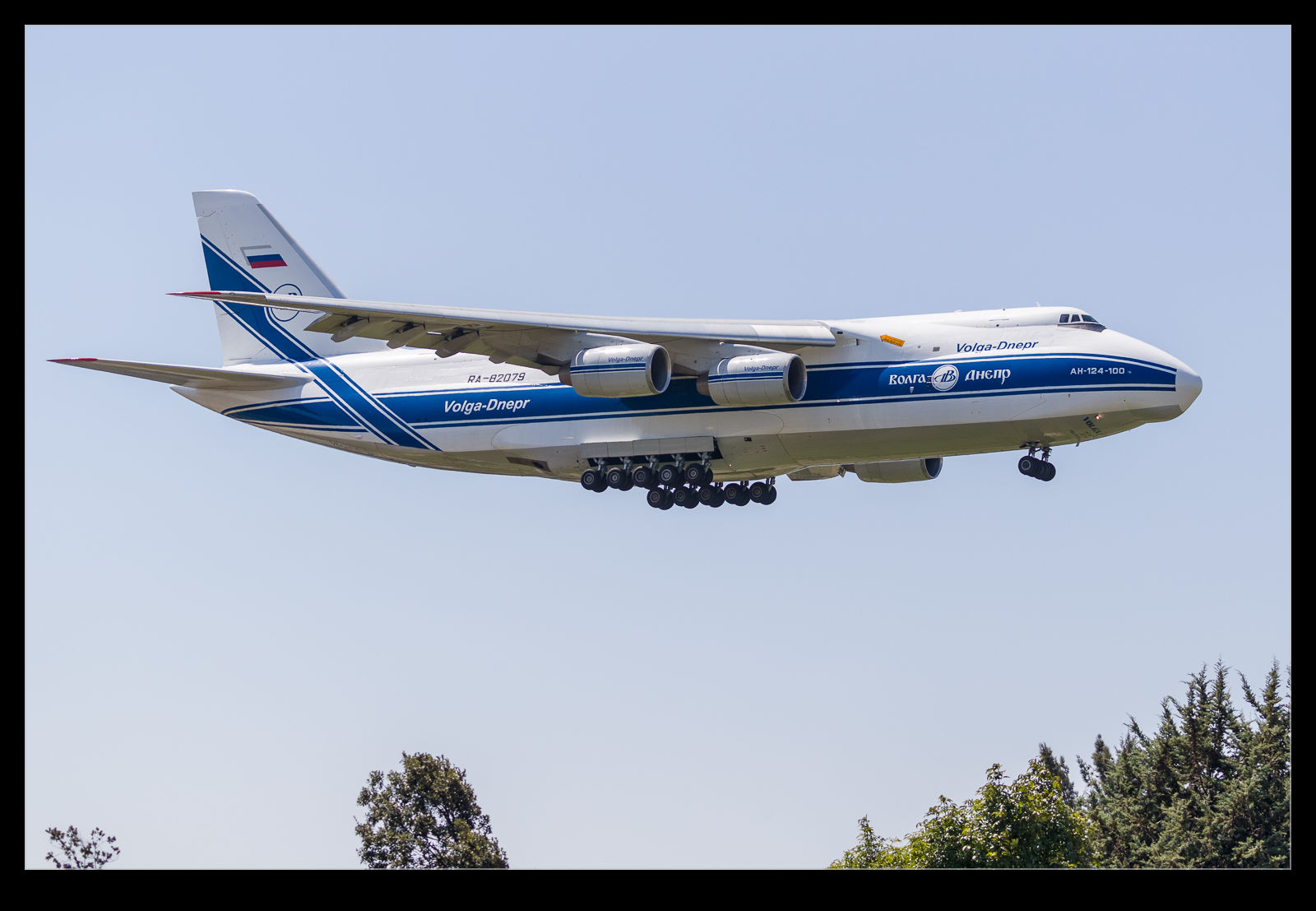 Moffett Field is located close to a couple of satellite manufacturing locations. When the time comes to ship the satellites to their launch location, the transport of choice is often the Antonov AN124. Twice, now, I have caught one of these huge aircraft coming in to pick up a payload. The most recent one resulted in getting these shots. The slightly annoying thing is that both times the plane came in in the middle of the day. This is the worst time for shooting at Moffett because the light is almost directly on the tail of the jet. Earlier or later would be fine. Oh well.
Moffett Field is located close to a couple of satellite manufacturing locations. When the time comes to ship the satellites to their launch location, the transport of choice is often the Antonov AN124. Twice, now, I have caught one of these huge aircraft coming in to pick up a payload. The most recent one resulted in getting these shots. The slightly annoying thing is that both times the plane came in in the middle of the day. This is the worst time for shooting at Moffett because the light is almost directly on the tail of the jet. Earlier or later would be fine. Oh well.
Monthly Archives: November 2016
Flocking Birds Over the Bay
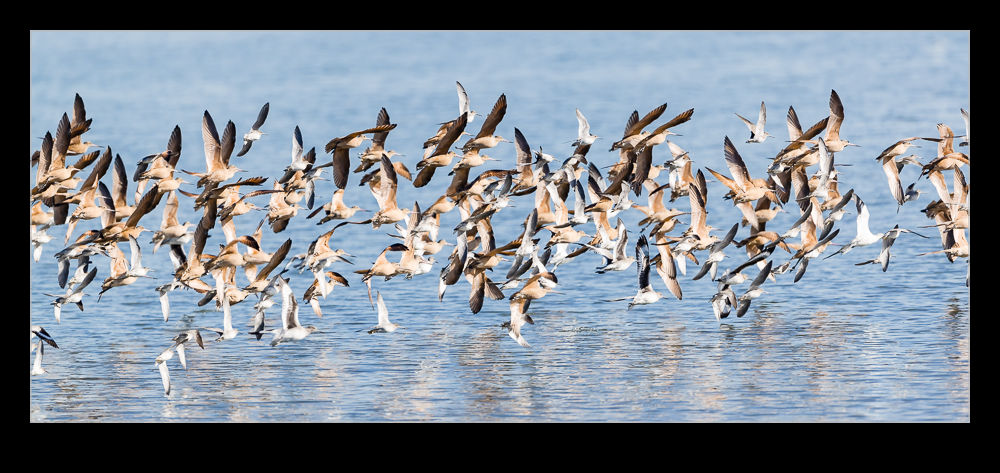 San Francisco Bay is hugely popular with birds. One place that they like a lot is the area near to the airport. Birds and planes do not normally mix well but, despite the large numbers of each, they seem to coexist here okay. As the tide goes out, the mudflats that are exposed are a great feeding ground for the birds. They cover all sizes too.
San Francisco Bay is hugely popular with birds. One place that they like a lot is the area near to the airport. Birds and planes do not normally mix well but, despite the large numbers of each, they seem to coexist here okay. As the tide goes out, the mudflats that are exposed are a great feeding ground for the birds. They cover all sizes too.
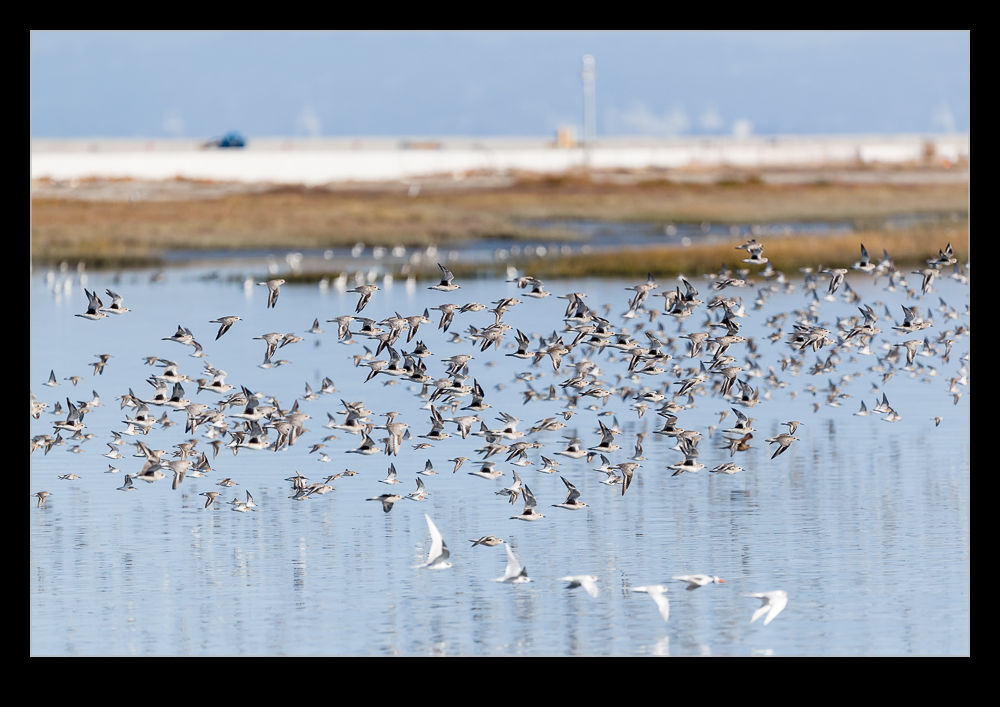 At the top end of the size range are the pelicans. They like to feed in the shallows when the fish are relatively easy pickings. They do stay away from the runways so don’t seem to be a problem (although a pelican would certainly not be a good thing for an airliner). The smaller birds are less of a threat individually but they tend to flock in huge numbers.
At the top end of the size range are the pelicans. They like to feed in the shallows when the fish are relatively easy pickings. They do stay away from the runways so don’t seem to be a problem (although a pelican would certainly not be a good thing for an airliner). The smaller birds are less of a threat individually but they tend to flock in huge numbers.
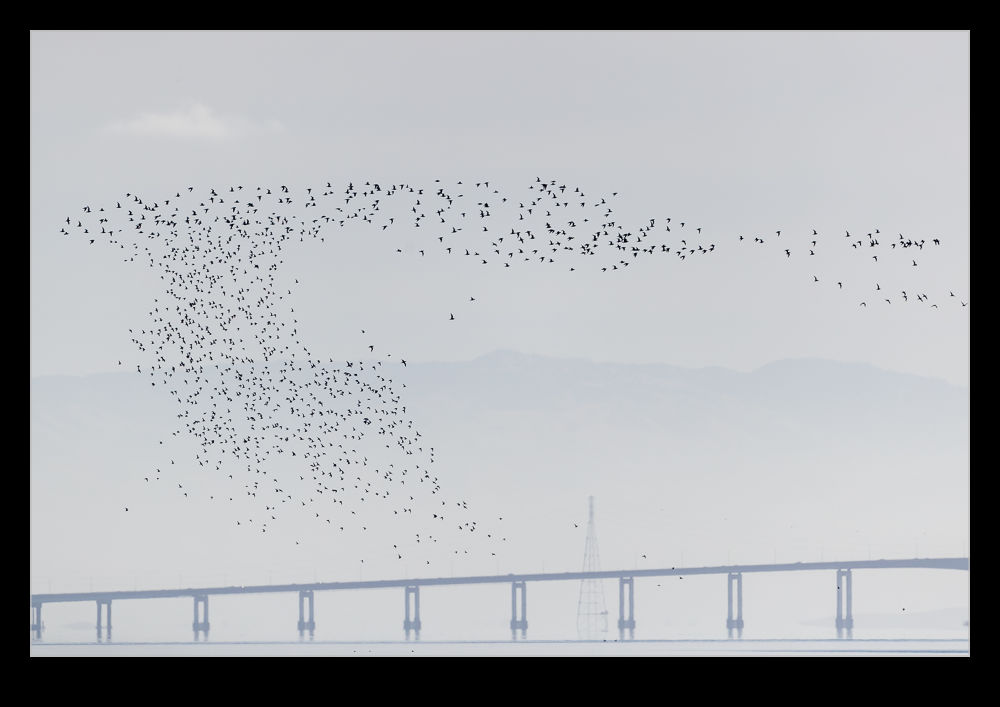 I saw a bunch of them flying not too far from the 01 runways. Again, they stay over the mudflats so don’t present a problem. In the opposite direction, there were some rather large flocks circling over the water. While not as large as murmurations of starlings, they were some pretty big groups. They also would move in a similar way with the whole thing looking very fluid from a distance.
I saw a bunch of them flying not too far from the 01 runways. Again, they stay over the mudflats so don’t present a problem. In the opposite direction, there were some rather large flocks circling over the water. While not as large as murmurations of starlings, they were some pretty big groups. They also would move in a similar way with the whole thing looking very fluid from a distance.
Sufas Finally Come Right
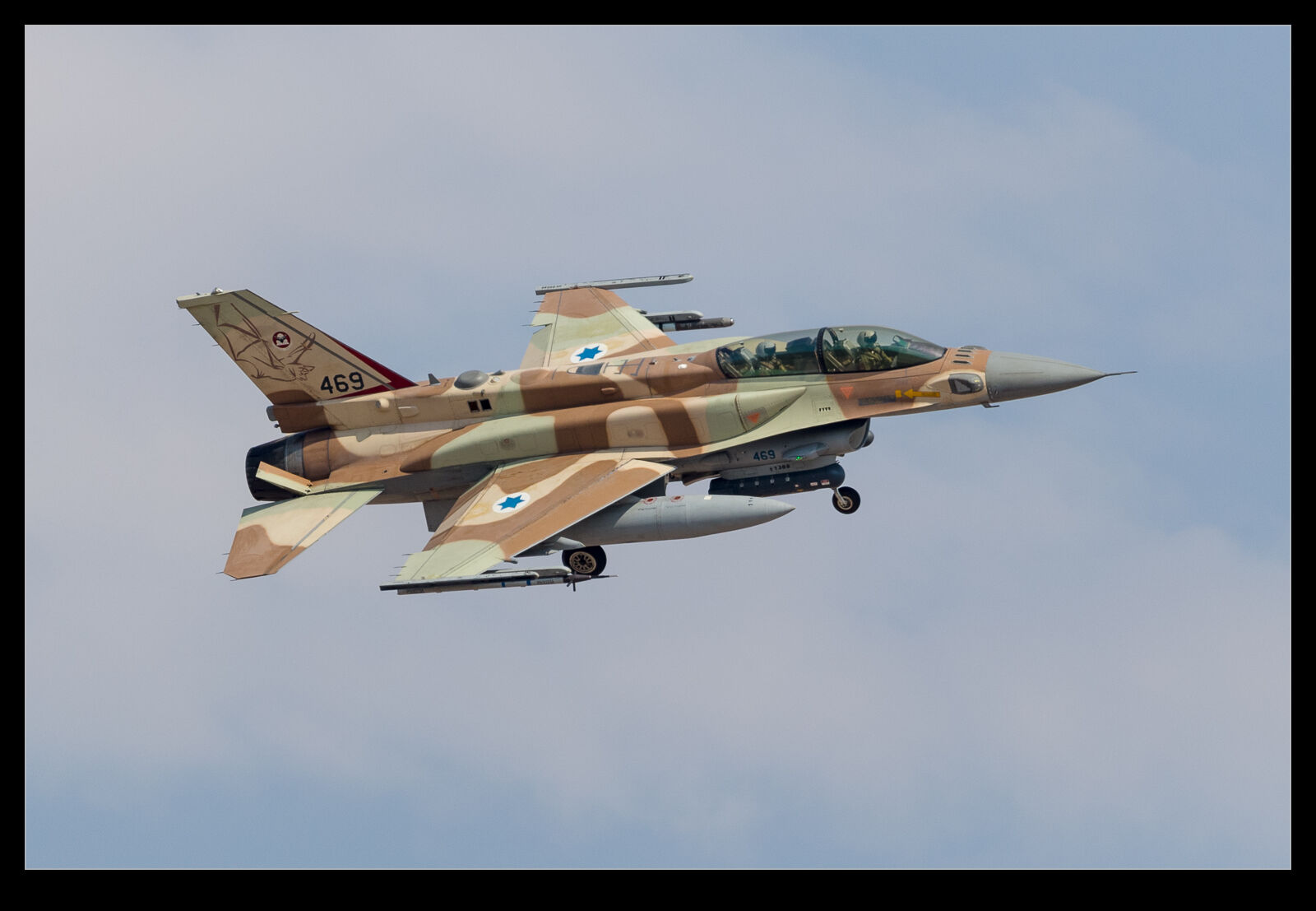 One of the big attractions of Red Flag 16-4 was the appearance of the F-16I jets of the Israeli Air Force. The Sufa is a variant of the F-16 that incorporates the conformal fuel tanks and a lot of local Israeli electronic equipment. In the days before I was there, the jets had been landing on the left runway which meant they broke away from the photographers and landed a fair distance away. When I was there, things changed.
One of the big attractions of Red Flag 16-4 was the appearance of the F-16I jets of the Israeli Air Force. The Sufa is a variant of the F-16 that incorporates the conformal fuel tanks and a lot of local Israeli electronic equipment. In the days before I was there, the jets had been landing on the left runway which meant they broke away from the photographers and landed a fair distance away. When I was there, things changed.
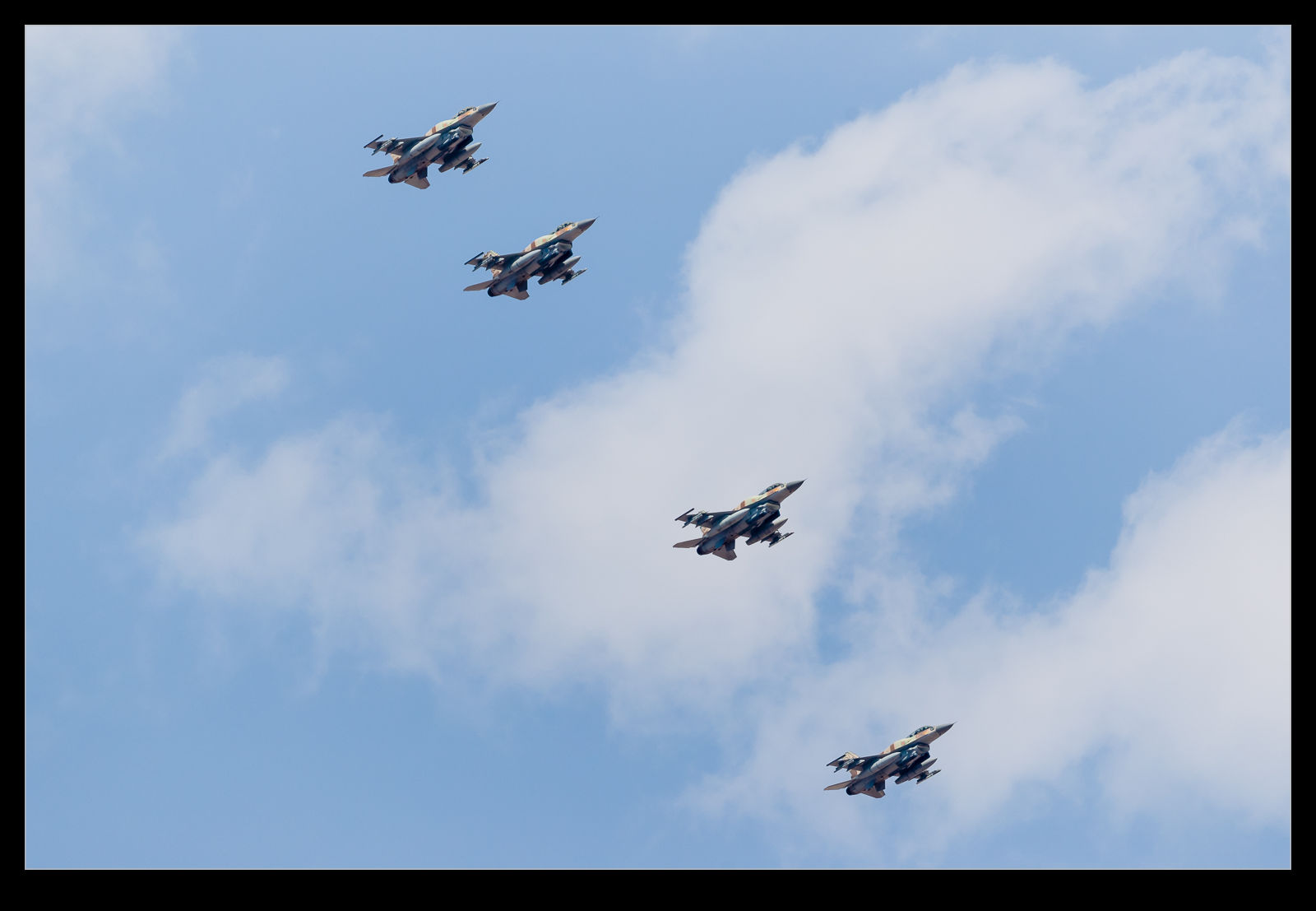 They started to come in with a right break for the right runway. This was really good news. It makes getting shots of them a lot easier. They didn’t fly very tight patterns so they were a little far away on the final turn but it was still better than if they went left. The departures were mainly from the far runway so they were a bit far then but it was still a good result for me.
They started to come in with a right break for the right runway. This was really good news. It makes getting shots of them a lot easier. They didn’t fly very tight patterns so they were a little far away on the final turn but it was still better than if they went left. The departures were mainly from the far runway so they were a bit far then but it was still a good result for me.
Polarizer Comparison
When I changed bodies, I had to update some of my accessories too. My old filter system was fine on a cropped body but with full frame, the filter holder encroached on the corners for the wide angle lenses. I took the opportunity to change my polarizer set up. I used to use a polarizer on my Cokin holder. This was a bit inconvenient when I was using lens hoods. Instead, I decided to get a screw in polarizer. Since most of my lenses have the same filter size, this gives me more flexibility.
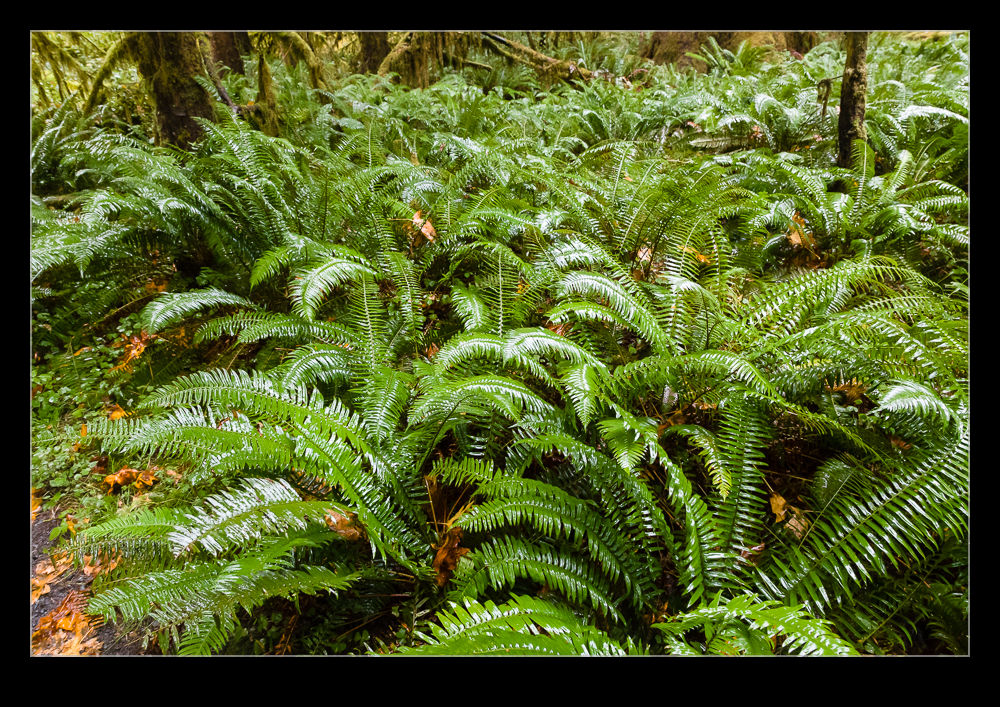
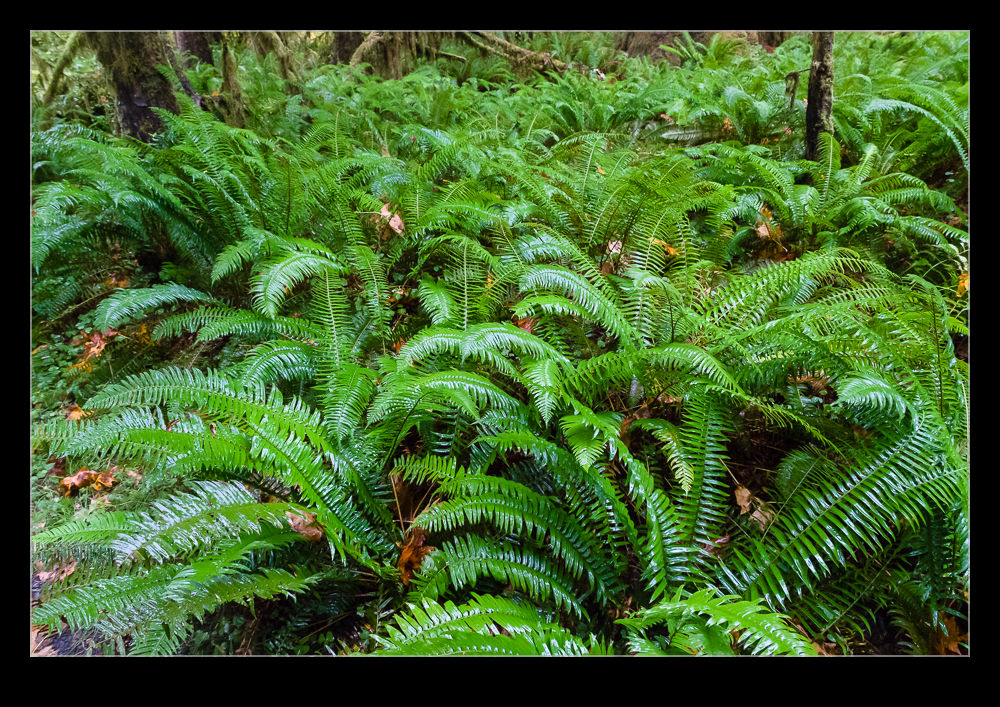 I took the polarizer with me on vacation. One place where I made good use of it was in the rain forest. While it was pretty dark in the heavy forest cover, there was moisture everywhere and this meant a lot of reflections and glare. Consequently, I went with the polarizer most of the time. While I was there, though, I decided to do some experimentation by repeating some shots without the polarizer to see how much of a difference it made. You can see the with and without shots here and judge for yourself what a difference it makes.
I took the polarizer with me on vacation. One place where I made good use of it was in the rain forest. While it was pretty dark in the heavy forest cover, there was moisture everywhere and this meant a lot of reflections and glare. Consequently, I went with the polarizer most of the time. While I was there, though, I decided to do some experimentation by repeating some shots without the polarizer to see how much of a difference it made. You can see the with and without shots here and judge for yourself what a difference it makes.
Grand Caravan is Not the Smoothest!
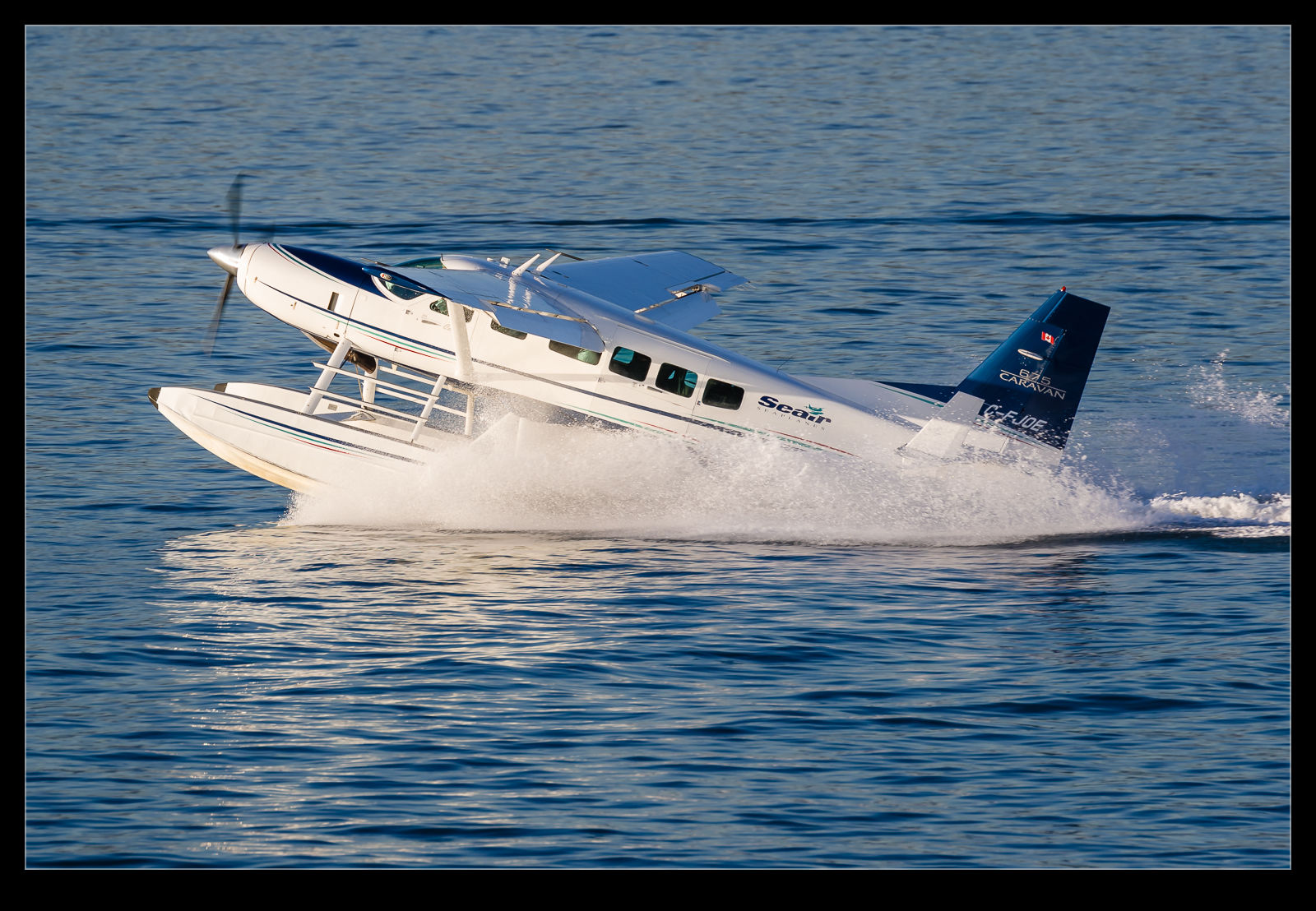 It might seem a bit absurd but, when watching all of the floatplane activity down in the harbor in Vancouver, you can get a bit used to the Otters and Beavers and hope for something a little different. One operator was using a Cessna Grand Caravan on floats and this got my interest. I saw it coming in on the approach and watched it all through the touchdown and slowing down to taxi speed.
It might seem a bit absurd but, when watching all of the floatplane activity down in the harbor in Vancouver, you can get a bit used to the Otters and Beavers and hope for something a little different. One operator was using a Cessna Grand Caravan on floats and this got my interest. I saw it coming in on the approach and watched it all through the touchdown and slowing down to taxi speed.
 The transition off the step and onto the floats did not seem to be a very smooth process. As the speed decayed, the aircraft pitched up and then oscillated between level and very nose high. The tail seemed to get very close to the water and there was plenty of spray. I have no idea whether this is the normal transition or whether this one got a bit out of sorts due to the conditions but it did no look like it would have been very comfortable inside. All was well, though. They flew out again a little while later with no issues.
The transition off the step and onto the floats did not seem to be a very smooth process. As the speed decayed, the aircraft pitched up and then oscillated between level and very nose high. The tail seemed to get very close to the water and there was plenty of spray. I have no idea whether this is the normal transition or whether this one got a bit out of sorts due to the conditions but it did no look like it would have been very comfortable inside. All was well, though. They flew out again a little while later with no issues.
Orcas Close But Still Elusive
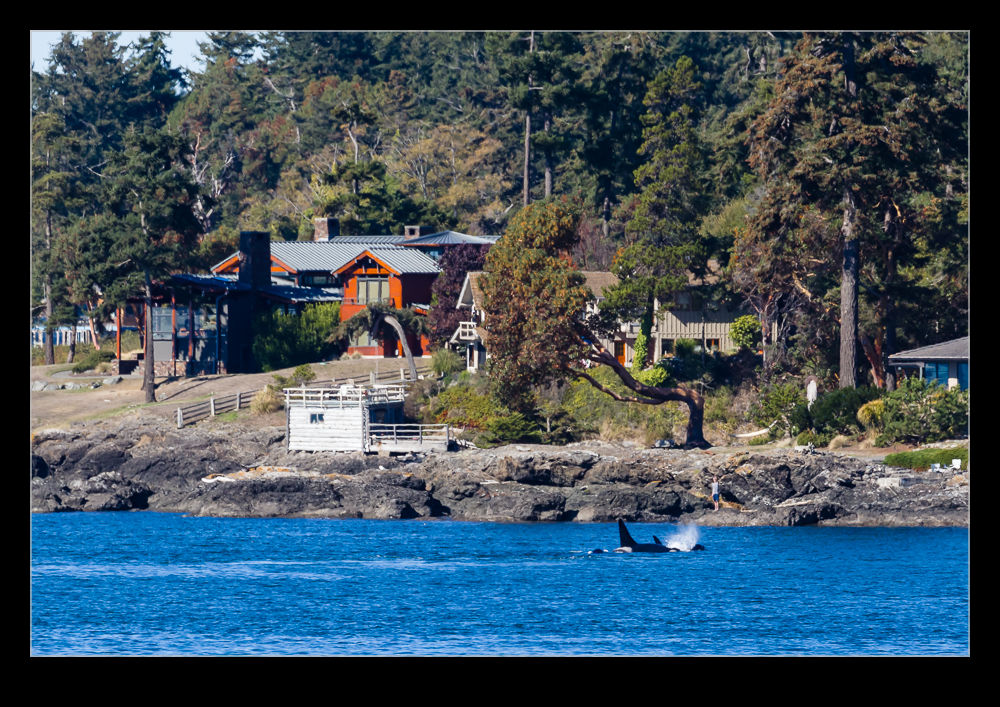 We have had some good opportunities recently to see orcas up close. That didn’t stop us looking for them while we were on San Juan Island. The west side of the island has regular whale activity of a few species. When we showed up at the good spots, we met people telling us what had been passing by earlier. We even just missed a humpback (or gray depending on who you talked to) that had come into Friday Harbor. We did get a bit luckier when we got to San Juan State Park.
We have had some good opportunities recently to see orcas up close. That didn’t stop us looking for them while we were on San Juan Island. The west side of the island has regular whale activity of a few species. When we showed up at the good spots, we met people telling us what had been passing by earlier. We even just missed a humpback (or gray depending on who you talked to) that had come into Friday Harbor. We did get a bit luckier when we got to San Juan State Park.
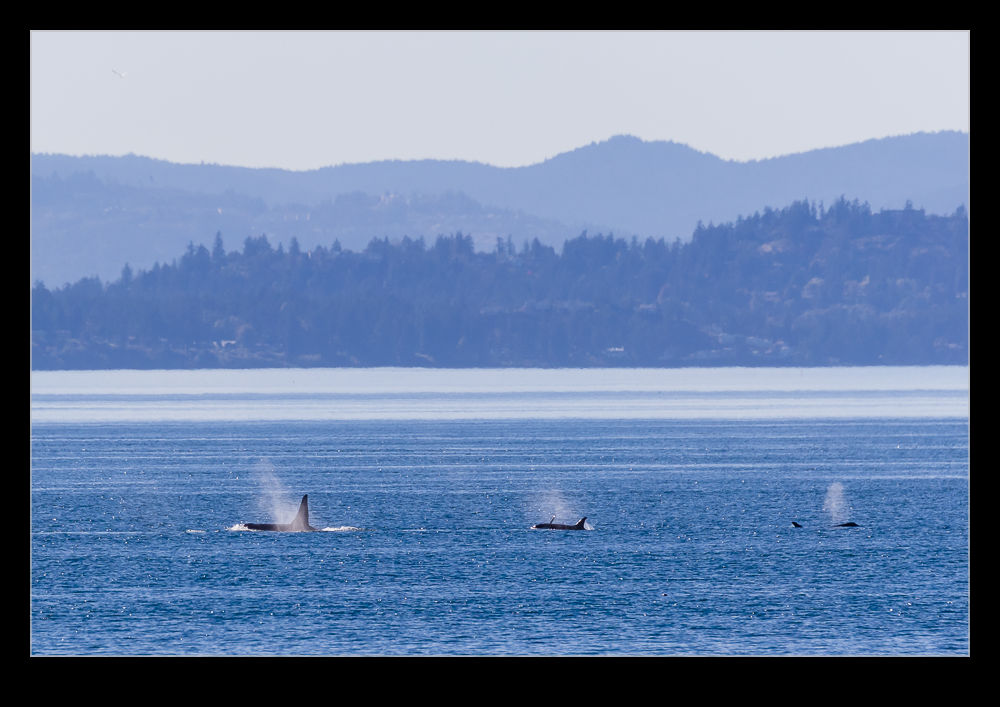 A bunch of orcas were off the coast a bit north of the area we visited. They seemed to be hanging around in one area so may have been feeding. There are two distinct groups of orcas in the area. The resident group feed on salmon while the transient group like mammals such as seals. This was the resident group apparently. Eventually they headed north away from us but, in the mean time, another part of the group came into view from the south. They transited north although sadly a bit far out for a good view.
A bunch of orcas were off the coast a bit north of the area we visited. They seemed to be hanging around in one area so may have been feeding. There are two distinct groups of orcas in the area. The resident group feed on salmon while the transient group like mammals such as seals. This was the resident group apparently. Eventually they headed north away from us but, in the mean time, another part of the group came into view from the south. They transited north although sadly a bit far out for a good view.
Where Have the Twin Otters Gone?
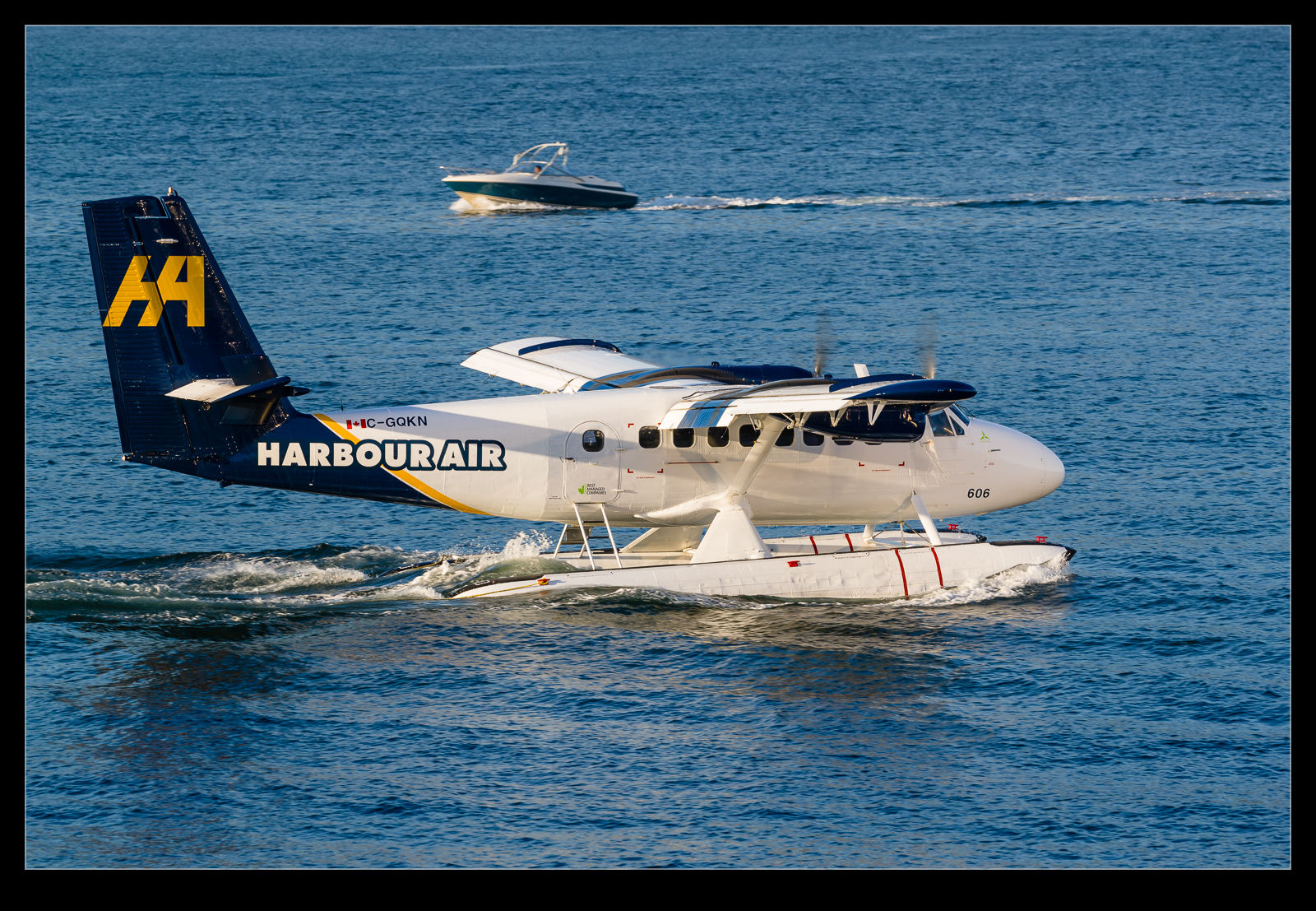 A few years ago we spent some time in Victoria on Vancouver Island. Victoria has a lot of floatplane activity and, at the time, an airline called West Coast Air was operating with a large fleet of Twin Otters. Since that time, West Coast was taken over by Harbour Air. Harbour Air is the dominant operator at Vancouver. However, while we were there, we saw only one Twin Otter. A check online seems to suggest that they have focused more on the Otters and Beavers and reduced the Twin Otter fleet. I assume they are not so economical for the type of operations they undertake but, if anyone has any more information about what happened, pleas let me know.
A few years ago we spent some time in Victoria on Vancouver Island. Victoria has a lot of floatplane activity and, at the time, an airline called West Coast Air was operating with a large fleet of Twin Otters. Since that time, West Coast was taken over by Harbour Air. Harbour Air is the dominant operator at Vancouver. However, while we were there, we saw only one Twin Otter. A check online seems to suggest that they have focused more on the Otters and Beavers and reduced the Twin Otter fleet. I assume they are not so economical for the type of operations they undertake but, if anyone has any more information about what happened, pleas let me know.
Relaxed Raptor Pilot
All cool fighter pilots should look like they are not operating a complex and expensive jet. Instead, they should look like they are out cruising in a convertible with their arm resting on the door just taking in the scenery. This guy obviously understands what is required and provides the casual look of a person enjoying their day!
Otters and Beavers
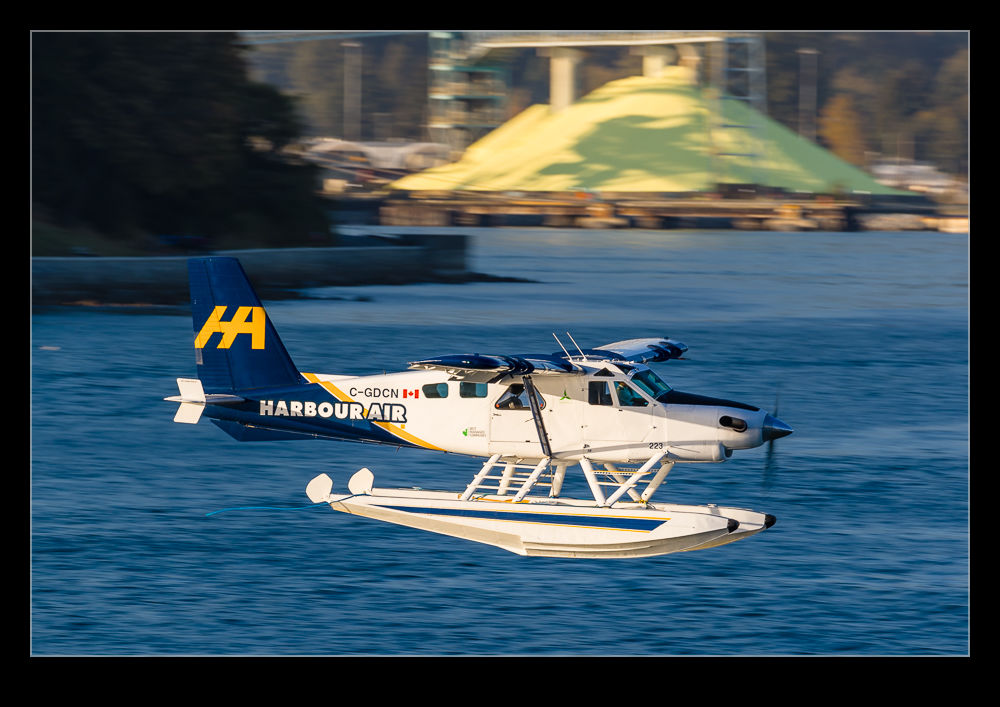 A trip to the northwest may involve seeing plenty of wildlife but the Otters and Beavers that I was most excited about were slightly different. These came from the stable of deHavilland Canada. More importantly, they were on floats. The Pacific Northwest is a great place for watching floatplanes. They are heavily used for transportation between many locations on the water. I saw a few while we were on San Juan Island or on the ferries between the islands but not a large number and not when I was in a position to get good shots. However, once we got to Vancouver, things ramped up a bit.
A trip to the northwest may involve seeing plenty of wildlife but the Otters and Beavers that I was most excited about were slightly different. These came from the stable of deHavilland Canada. More importantly, they were on floats. The Pacific Northwest is a great place for watching floatplanes. They are heavily used for transportation between many locations on the water. I saw a few while we were on San Juan Island or on the ferries between the islands but not a large number and not when I was in a position to get good shots. However, once we got to Vancouver, things ramped up a bit.
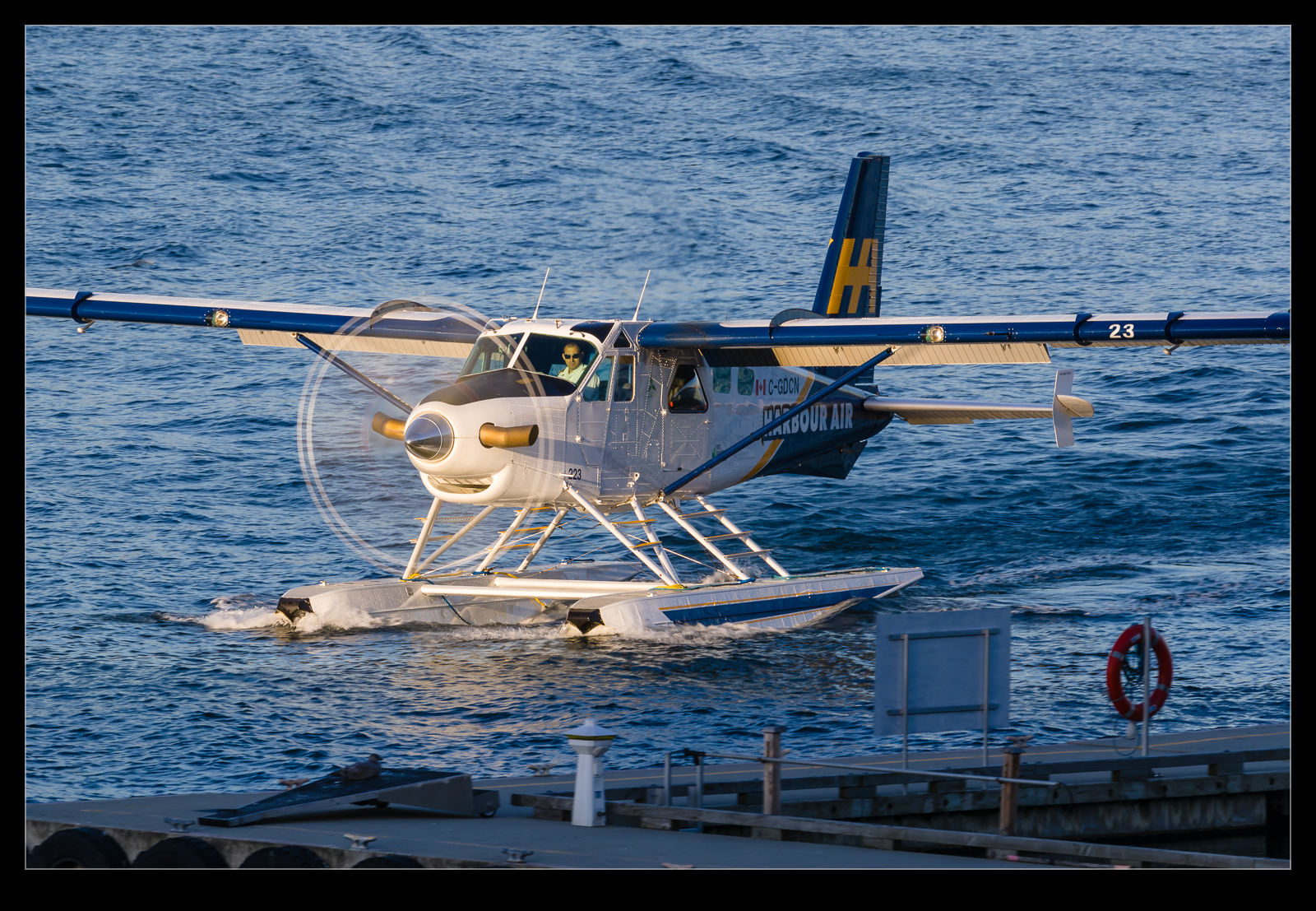 If you have not been to Vancouver, the harbour (it is a Canadian harbor so I think I am spelling it correctly) has a very busy floatplane base. Flights go to surrounding areas and the gulf islands on a regular basis. The planes are a combination of turbine powered Otters and Beavers with either piston engines or turbine conversions. Harbour Air is the dominant operator but others do show up occasionally. The area along the waterfront has undergone a big redevelopment with a convention center and it has great walkways along the water that provide an excellent view of the operations. Planes seem to be coming and going all the time. The may come in across Stanley Park and land in front of you or swing around the harbor and land towards you depending on the wind. As they water taxi in someone else will be heading out and departing towards North Vancouver before turning around the park and heading out over Lions Gate.
If you have not been to Vancouver, the harbour (it is a Canadian harbor so I think I am spelling it correctly) has a very busy floatplane base. Flights go to surrounding areas and the gulf islands on a regular basis. The planes are a combination of turbine powered Otters and Beavers with either piston engines or turbine conversions. Harbour Air is the dominant operator but others do show up occasionally. The area along the waterfront has undergone a big redevelopment with a convention center and it has great walkways along the water that provide an excellent view of the operations. Planes seem to be coming and going all the time. The may come in across Stanley Park and land in front of you or swing around the harbor and land towards you depending on the wind. As they water taxi in someone else will be heading out and departing towards North Vancouver before turning around the park and heading out over Lions Gate.
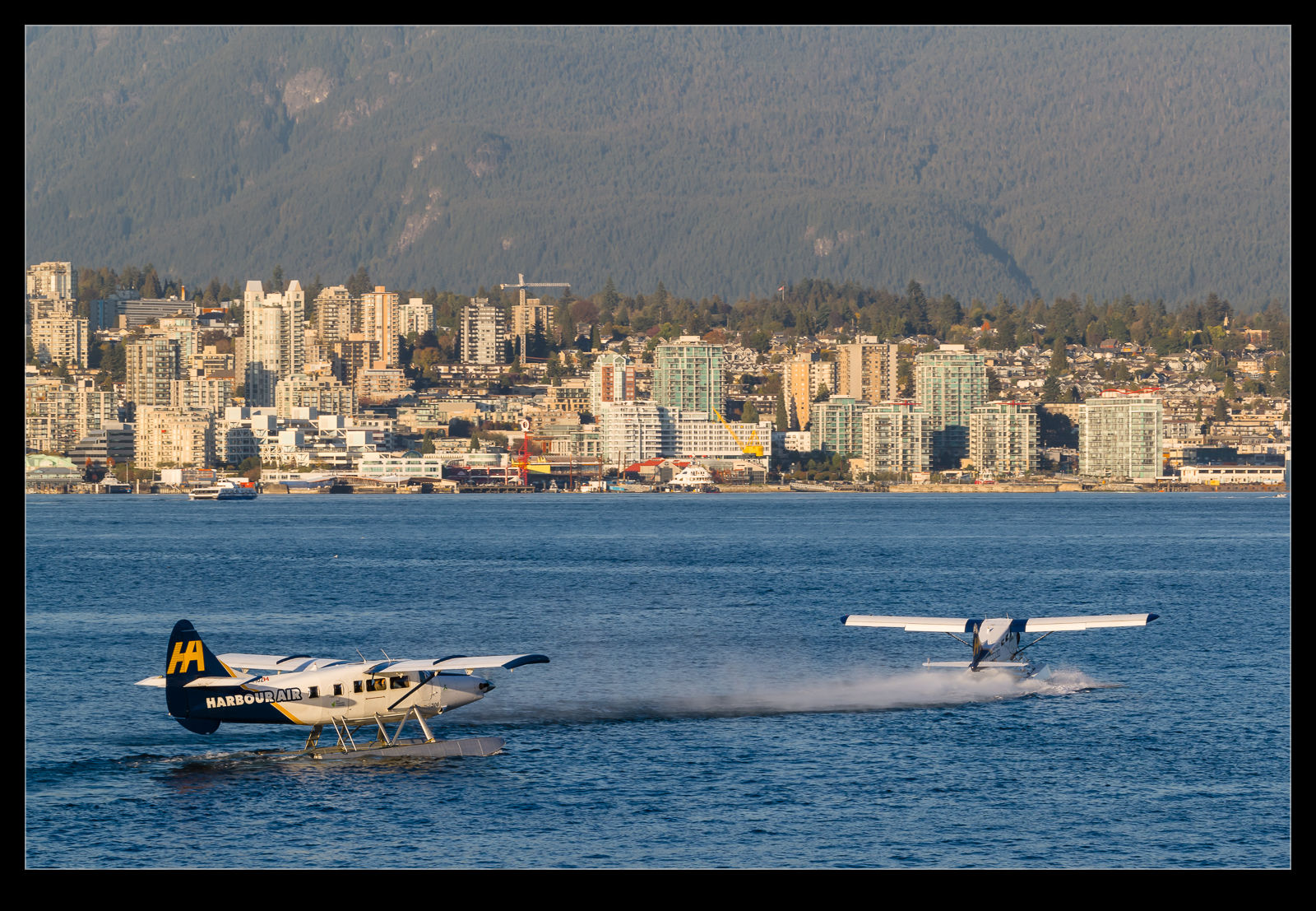 We were there at the end of the day so the evening light was very nice on the aircraft. The large number of high rise buildings on the shore does mean that shadows can encroach before the sun has gone down but this is a small issue. Later in the visit we were over in Stanley Park and I got to see some aircraft taking off since they came closer to our position. The damp air certainly makes for some nice streaming vortices off the props when they are at takeoff power.
We were there at the end of the day so the evening light was very nice on the aircraft. The large number of high rise buildings on the shore does mean that shadows can encroach before the sun has gone down but this is a small issue. Later in the visit we were over in Stanley Park and I got to see some aircraft taking off since they came closer to our position. The damp air certainly makes for some nice streaming vortices off the props when they are at takeoff power.
Rialto Beach
 If you mention going to the beach, most people will initially visualize a sandy stretch with the sun in the sky and the waves lapping the shore. While that is certainly nice, I also love a rugged beach on a rough weather day. We took a diversion during one of our day trips and headed for Rialto Beach. There was rain in the air and the wind was certainly blowing but this enhanced the atmosphere of the beach. Just offshore, large rocky outcroppings rose from the water. Their tops were almost obscured by low cloud and the waves were crashing up against them.
If you mention going to the beach, most people will initially visualize a sandy stretch with the sun in the sky and the waves lapping the shore. While that is certainly nice, I also love a rugged beach on a rough weather day. We took a diversion during one of our day trips and headed for Rialto Beach. There was rain in the air and the wind was certainly blowing but this enhanced the atmosphere of the beach. Just offshore, large rocky outcroppings rose from the water. Their tops were almost obscured by low cloud and the waves were crashing up against them.
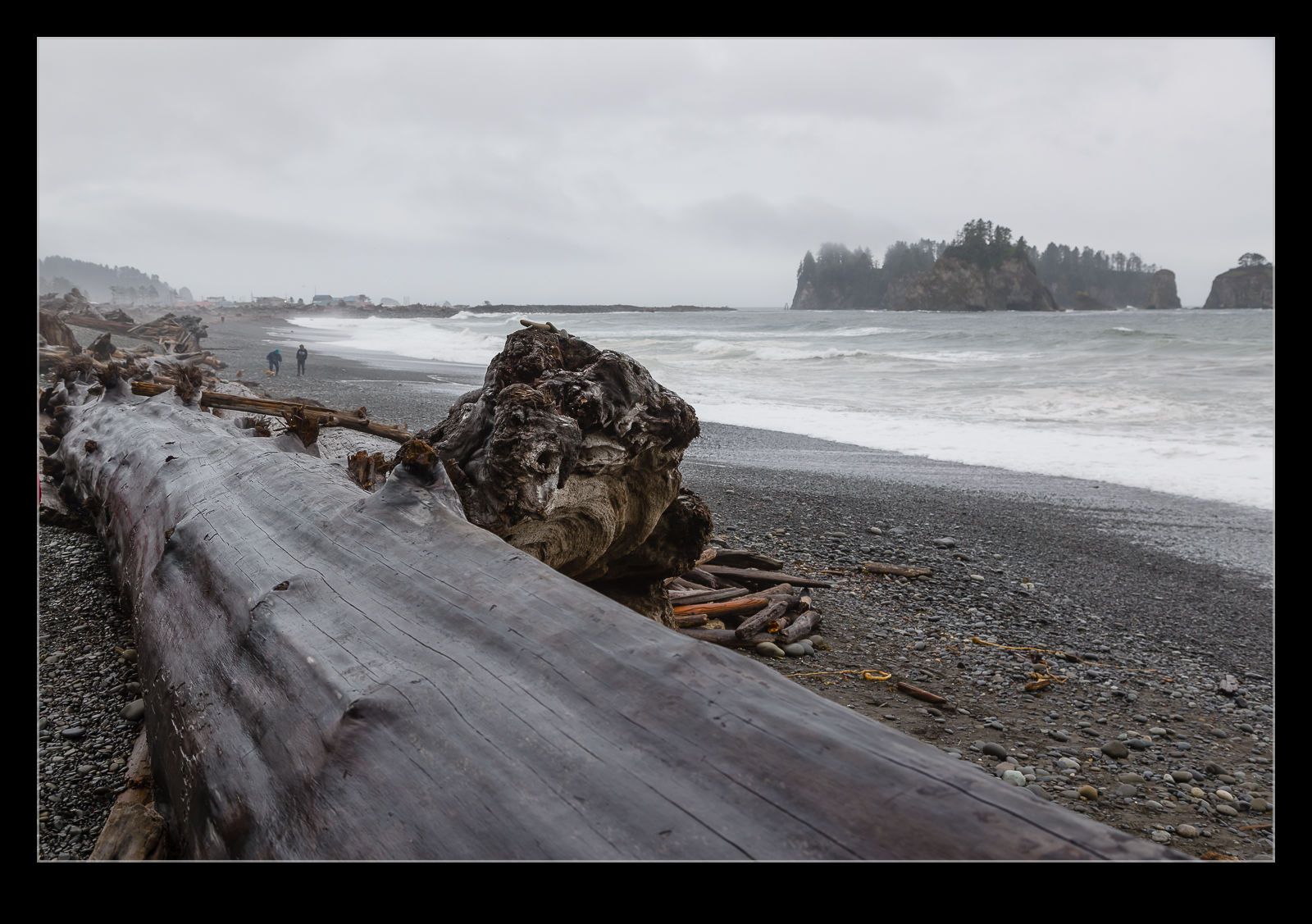 The shoreline was covered with debris that had washed ashore. Logs were stacked up at the high water mark where the waves had pushed them as far as they could go. The bark was stripped leaving the core wood polished and exposed. The stones that made up the beach were ridged based on how high the tide and the waves would push them. Everything looked dramatic in the damp and windy conditions. The attraction of the place was obviously high because plenty of people were there. Whether walking their dogs along the beach, taking a walk along the water’s edge or just standing up near the logs and staring out to sea, they were there in numbers.
The shoreline was covered with debris that had washed ashore. Logs were stacked up at the high water mark where the waves had pushed them as far as they could go. The bark was stripped leaving the core wood polished and exposed. The stones that made up the beach were ridged based on how high the tide and the waves would push them. Everything looked dramatic in the damp and windy conditions. The attraction of the place was obviously high because plenty of people were there. Whether walking their dogs along the beach, taking a walk along the water’s edge or just standing up near the logs and staring out to sea, they were there in numbers.
